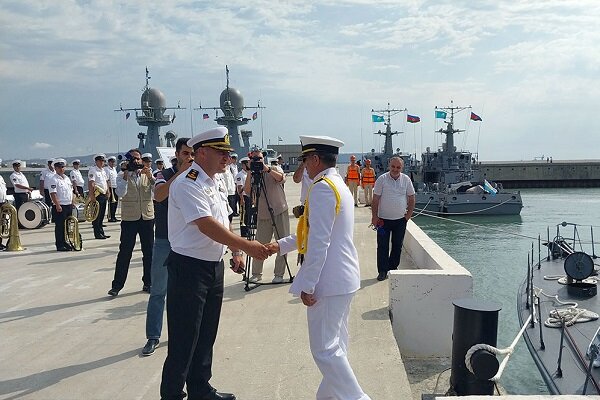Iranian gunboat diplomacy

"An aircraft carrier is 100,000 tons of diplomacy," said Henry Kissinger, about half a century ago during his tenure as US Secretary of State. The roots of this phrase date back to the nineteenth century, when Western colonial powers used a special method to secure their colonial interests.
Political and commercial representatives of these powerful countries went to other countries and negotiated with their leaders. At the same time, warships were stationed near the coasts of the target country. The host country was informed of the presence of warships on its shores, and Western envoys dictated what they wanted to the other side with the support of their navy without the need for operational use of ships.
This threatening and common method later became known as "gunboat diplomacy" and entered international relations literature. Despite the fact that nearly two centuries have passed since those days, this diplomacy is still in use. James Cable, a British naval officer, and diplomat, has spent more than two decades explaining this diplomacy through a series of writings. Cable divides "gunboat diplomacy" into four categories:
-Definitive Force: the use of gunboat diplomacy to create or remove a fait accompli.
-Purposeful Force: application of naval force to change the policy or character of the target government or group.
-Catalytic Force: a mechanism designed to buy a breathing space or present policymakers with an increased range of options.
-Expressive Force: use of navies to send a political message. This aspect of gunboat diplomacy is undervalued and almost dismissed by Cable.
The Islamic Republic of Iran's approach to the sea has changed since about 14 years ago. In October 2009, Ayatollah Khamenei, Commander-in-Chief of the Armed Forces, used the term "strategic naval force" for the first time, stating that "the naval force today is a strategic force in many parts of the world and in our country; it should be viewed as a strategic force."
The result of this change in perspective and strategy can be seen today in the voyage of the 86th flotilla to the farthest waters of the world. In this mission, the destroyer Dena traveled a route that had never been taken before in Iran's history. The destroyer voyaged the largest oceanic expanse in the world, namely the Pacific Ocean.
A very important point that is less noticed in this regard is that this significant achievement was made under severe sanctions against Iran, and what has been built and utilized is entirely the product of Iranian experts' thinking and efforts. This key point is deliberately ignored by anti-Iran media outlets.
Anyway, presence in international waters and the advancement of its navy is not just a choice for us. We are obliged to have this presence and progress. The Islamic Republic of Iran is facing various threats, a significant portion of which originates from the sea. The United States is officially and openly seeking to besiege and suffocate Iran in the seas. The theft of Iranian oil tankers, which has happened repeatedly, and harassment of other Iranian vessels are among these threats.
We have no choice but to strengthen ourselves in the seas to protect Iran's economic interests and maritime trade. Another point is that the global order is undergoing serious changes and transformations. In such circumstances, while it is clear that the sea is a source of power and many benefits if a country wants to have a proper place in the new global order, it cannot and should not appear weak at sea.
Until just a few years ago, Americans had complete superiority in the air. Two years ago, General Kenneth Frank McKenzie, then-commander of CENTCOM, made a notable admission and said that with Iran's drone advancements, America had lost complete air superiority for the first time since the mid-twentieth century. The great achievement that was accomplished in the air with Iranian creativity and perseverance will soon happen at sea as well.
Leave a Comment